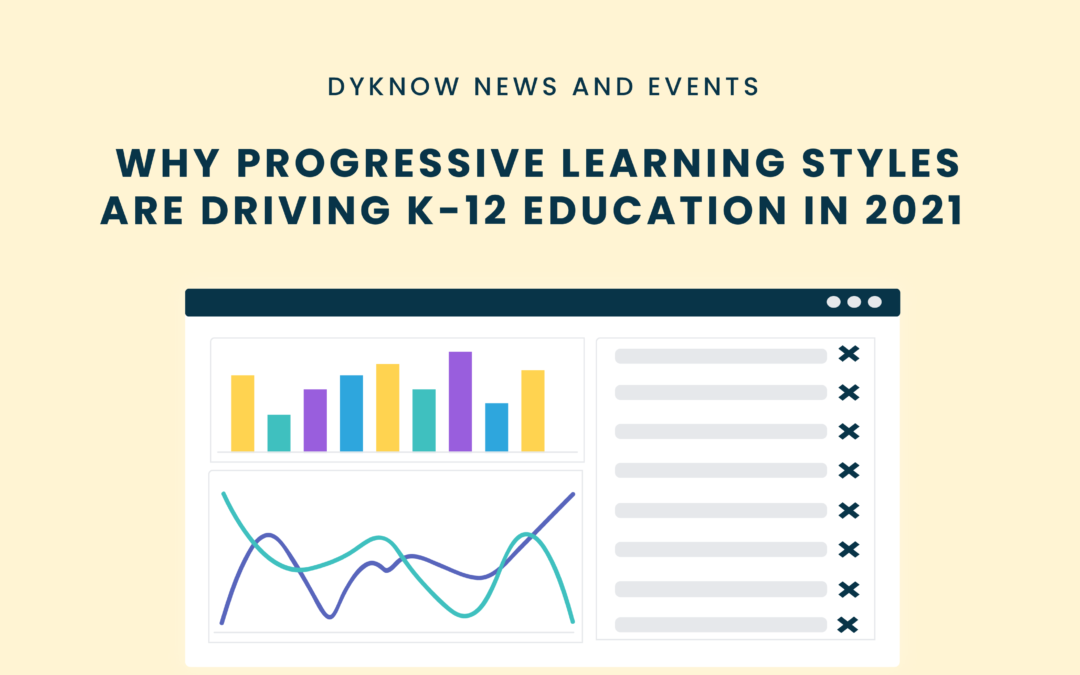Right now, K-12 education is developing more than it ever has before. Back in March, remote learning was implemented in response to the pandemic, but now educators have to continue instruction this way the best they can. Since adapting to this new type of classroom, educators have implemented and created many different learning styles, tactics, and ways of instruction to make online learning just as effective. These new ways of learning have progressed education into a new realm of educational technology and exposed educators to the idea that maybe the traditional, or old, way of learning was not as effective as they once thought. Progressive learning styles are said to take over the 2021 school year in hopes of changing the direction in which education was once headed.
In a recent conversation with Jorge Valenzuela, he explained how progressive learning styles are the future of education and why they are driving the 2021 school year.
Why Progressive Learning Styles are Driving K-12 Education in 2021
Throughout COIVD-19 a huge concern for educators is educational equity. Jorge explained how the transition to more of a technologically advanced way of learning may cause the digital divide to increase if not proceeded with caution. Equal opportunity needs to be provided to all students regardless of their at-home situation. Schools are working with their parents and students to provide resources for the families that need help. Hotspots, devices, and tools have all been distributed throughout districts around the nation to help to further close the digital divide.
Jorge also states, “There are inequities that cannot be solved by simply giving everyone a device or what we think they need. Inequities cause trauma and disadvantages.” Teachers have an opportunity to really get to know their students and their current situations during the pandemic. Positive relationships are proven to make learning easier for the students and help the teacher to know exactly how to cater to their students. “As teachers, we need to acknowledge and think about who is in our classroom and address inequities through social-emotional learning so that we can help our kids become better at understanding their environment, themselves, other people, making relationships, and making good decisions,” stated Jorge. Progressive styles like Social-emotional learning and personalized learning are two of the most popular ways to incorporate the overall education and emotional needs of the students into the classroom.
He emphasizes the need for cultural awareness inside the classroom. Jorge explained that when students have different backgrounds or cultures than you, you need to make the lessons and teaching more relevant to those students and their lives. Promoting cultural and social awareness in education can make that much more of a difference for those students. For educators, it is their job to know how to best serve students.
Progressive Learning Styles that Work
Personalized Learning
ISTE explains that it is the “purposeful design of blended instruction to combine face-to-face teaching, technology-assisted instruction, and student-to-student collaboration to leverage each student’s interests for deeper learning.”
Social-Emotional Learning
Social-emotional learning is exactly what it sounds like. The ability to understand your own feelings and the feelings of others to know how to react in specific settings. Casel.org defines social-emotional learning as, “the process through which children and adults understand and manage emotions, set and achieve positive goals, feel and show empathy for others, establish and maintain positive relationships, and make responsible decisions.”
Flipped Learning
With the flipped learning model, teachers begin the school day explaining the content outline, but instead of teaching the content, the students spend the next portion of the day accessing the content on their own. While students work either in groups or individually, teachers are there to coach them through the learning process and at times facilitate group discussions.
Project-Based Learning
PBL Works defines project-based learning as, “a teaching method in which students learn by actively engaging in real-world and personally meaningful projects.” With project-based learning, students are able to gain real-life experience while building on and connecting concepts previously learned.
Listen to the full conversation with Jorge Valenzuela on our Tackling Tech Podcast!
On this episode of Tackling Tech Podcast, powered by Dyknow, Brett McGrath speaks with Jorge Valenzuela, educational coach, curriculum specialist, and author of Rev Up Robotics. Jorge teaches workshops on Project-Based Learning, Computer Science, and STEM. He is hosting the Friday session of Progressive Learning Conference, Sept-21-25.
Start teaching confidently with Dyknow for free!
Latest blog articles

Dyknow 2021 Year In Review
In addition to web browser updates and bug fixes, Dyknow released several major product updates, new features and enhancements. Check out Dyknow’s 2021 Year in Review!

The Classroom Management Tool that’s Rated #1 in Satisfaction on G2
K-12 Administrators across the world trust G2 as the #1 platform to find, research, and choose EdTech tools that solve the most pressing problems their teachers are experiencing. In G2's Fall 2021 Reports, Dyknow was once again rated #1 in overall Satisfaction out of...

Bringing Diversity and EdTech to the English Classroom
On this episode of Tackling Tech, Tierra Leustig interviews Scott Bayer about being an anti-racist teacher, diversifying reading lists, creating inclusive learning environments, and leveraging ed-tech in non-technical ELA classrooms. Scott Bayer is a High School...

